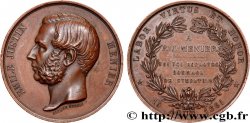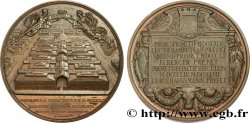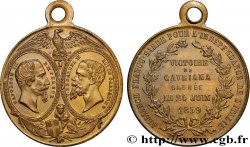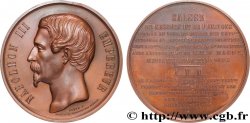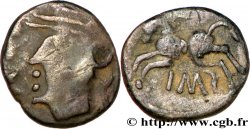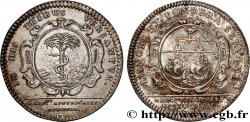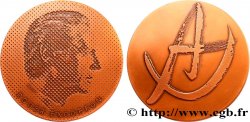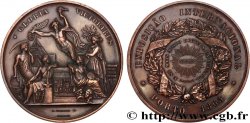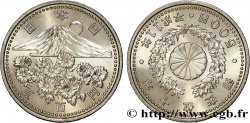fme_889707 - SECOND EMPIRE Médaille, Palais de l’Industrie, Vue du pavillon Nord et des Galeries
65.00 €约 538.85 CNY
数量
加入购物车

种类 Médaille, Palais de l’Industrie, Vue du pavillon Nord et des Galeries
日期: 1855
铸币厂名称/城市 75 - Paris
材质 tin
直径 68 mm
模子方针 12 h.
重量 125,44 g.
侧面 Lisse
印模 sans poinçon
关于品相的说明
Patine grise hétérogène, présentant quelques concrétions dans le creux de certains reliefs. Présence de coups et rayures. Trou percé sur la tranche à 12 heures
出版目录中的项代码 :
正面
正面的文字 PALAIS DE L’INDUSTRIE, (LÉGENDE SUPÉRIEURE) ; PAVILLON DU NORD / GERVAIS ET C EDIT..
正面的说明书 Vue du Pavillon nord du Palais de l’Industrie; signé : J. WIENER F..
背面
背面的文字 PALAIS DE L’INDUSTRIE / VUE DES GALERIES / GERVAIS ET CIE EDIT.
背面的说明书 Vue intérieure des galeries; signé : JACQUES WIENER FEC. et MANGUIN DEL.
评论
L’exposition universelle fut décrétée pour le 15 mai 1855 pour témoigner au monde entier de la prospérité de la France, suite à l’exemple de l’Angleterre en 1851. Napoléon III inaugura cette première exposition universelle française en déclarant : “j’ouvre avec bonheur ce temple de la paix qui convie tous les peuples à la concorde”.
Le palais de l’industrie étonna par sa construction métallique et la hardiesse de la nef centrale haute de 35 mètres. Construit de 1853 à 1855, sur les plants de l’architecte Jean-Marie VIel (1797-1863), il forme un parallélogramme de fonte et de verre à deux étages, dont les façades principales ont 252 mètres de long, et les façades latérales 108 mètres. Il est composé d’un pavillon central et de pavillons d’angle. L’entrée principale se compose d’une immense arcade, flanquée de chaque côté de colonnes corinthiennes et surmontées d’une attique que décorent un bas-relief.
A l’intérieur, la nef principale (192 mètres de long, 48 de large et 35 de haut) est entourée au rez-de-chaussée d’une triple galerie formée par quatre rangées de colonnes de fonte supportant une galerie supérieure. Les voûtes, en verre dépoli, sont supportées par der fermes en fonte de fer.
Le palais subsistera jusqu’en 1900 pour ensuite être démoli et remplacé par les Petit et Grand Palais actuels construits pour l’Exposition Universelle de Paris en 1900.
Source : Médailles de Napoléon III, Hess Divo
Vous pouvez retrouver une vue du palais sur ce lien : http://www.carnavalet.paris.fr/fr/collections/vue-d-une-allee-transversale-du-palais-de-l-industrie.
Le palais de l’industrie étonna par sa construction métallique et la hardiesse de la nef centrale haute de 35 mètres. Construit de 1853 à 1855, sur les plants de l’architecte Jean-Marie VIel (1797-1863), il forme un parallélogramme de fonte et de verre à deux étages, dont les façades principales ont 252 mètres de long, et les façades latérales 108 mètres. Il est composé d’un pavillon central et de pavillons d’angle. L’entrée principale se compose d’une immense arcade, flanquée de chaque côté de colonnes corinthiennes et surmontées d’une attique que décorent un bas-relief.
A l’intérieur, la nef principale (192 mètres de long, 48 de large et 35 de haut) est entourée au rez-de-chaussée d’une triple galerie formée par quatre rangées de colonnes de fonte supportant une galerie supérieure. Les voûtes, en verre dépoli, sont supportées par der fermes en fonte de fer.
Le palais subsistera jusqu’en 1900 pour ensuite être démoli et remplacé par les Petit et Grand Palais actuels construits pour l’Exposition Universelle de Paris en 1900.
Source : Médailles de Napoléon III, Hess Divo
Vous pouvez retrouver une vue du palais sur ce lien : http://www.carnavalet.paris.fr/fr/collections/vue-d-une-allee-transversale-du-palais-de-l-industrie.







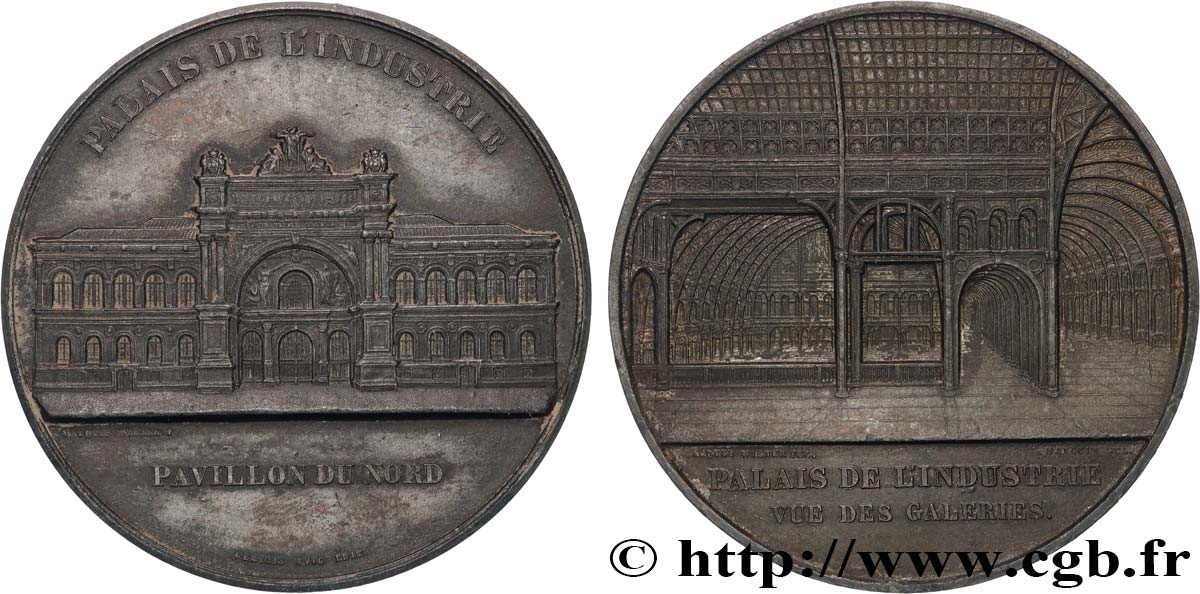
 对产品描述纠错
对产品描述纠错 打印
打印 分享我的选择
分享我的选择 提问
提问 Consign / sell
Consign / sell
 产品介绍
产品介绍